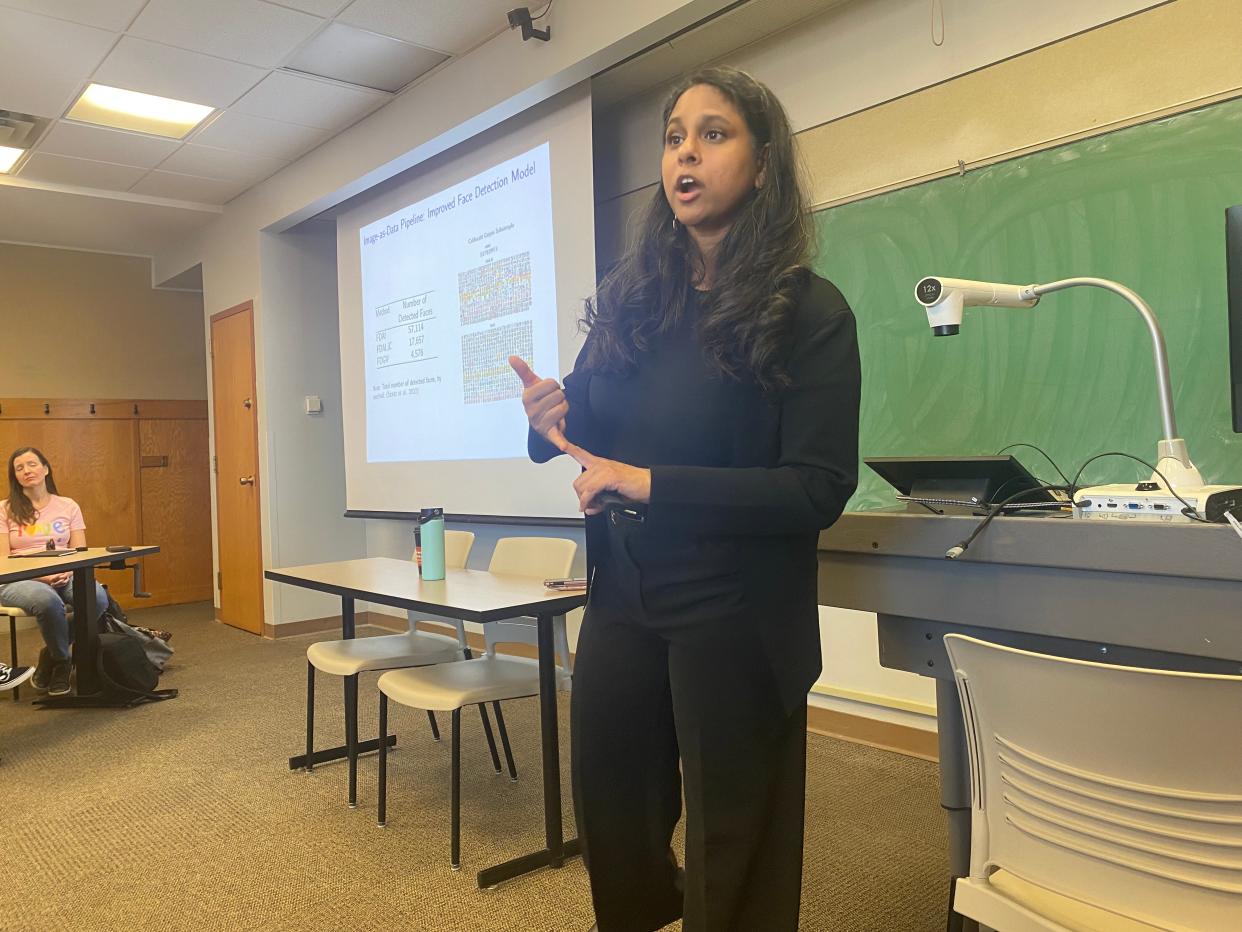How well do children's books represent race and gender? This academic used AI to analyze

Inequality of representation for race, gender and skin color remains in children's books, but the inequality has reduced over time.
It's one of the many findings presented Friday by Anjali Adukia, assistant professor in the Harris School of Public Policy at the University of Chicago. She delivered the Monroe-Paine Distinguished Lecture in the Truman School of Government and Public Affairs at the University of Missouri.
Her audience in Middlebush Hall was students and faculty from the Truman School.
Adukia and her co-authors used artificial intelligence to analyze images and text in 100 years of award-winning children's books. The research was published in the "Quarterly Journal of Economics."
Seeing oneself represented in the world is an important need and AI provided a systematic way to study it, Adukia said.
"There's this whole notion that representation matters," Adukia said. "People have thought about representation for a long time."
The research analyzed books that won the mainstream awards, including Newberry and Caldecott — "It's really a big deal to get these," Adukia said — and books that won diversity book awards.
Each page of each book was scanned, she said.
What is called skin segmentation was conducted to determine skin color, using a fully connected convultional neural network.
"There was a representative skin color for every face," Adukia said.
Part of the process required human input, so she said she used her children.
"My kids during COVID coded about 5,000 faces," Adukia said. "College students way overthought this."
Optical character recognition was used to analyze race, gender and age. For example names, like Anjali, or words like girl, queen and pronouns were analyzed. For named individuals, AI predicted gender, birthplace and race.
"Asians were more likely to have lighter skin in the mainstream books and darker skin in the diversity collection," Adukia said.
The majority of individuals in images are white, she said.
In images of Martin Luther King Jr., many times his facial features are more light than they were in life, she said.
"Most famous people mentioned are white men," Adukia said.
Black men are next.
"Even in the female collection, there are more males than females," she said.
Among mainstream books, the first famous woman to make an appearance on the list is Eleanor Roosevelt, at 16, while the first Black woman is Rosa Parks, at 43.
"Females are more likely to show up in images than in text," Adukia said.
There was another association among female characters in the analysis.
"Females are more likely to be associated with appearance instead of competence," she said.
Black people are associated with struggle, not power, she said. Black women are portrayed negatively.
Another finding really surprised her, she said.
"Children are lighter than adults across all collections," Adukia said, referring to skin color. "There's no biological reason this should happen."
There are few mixed-race parents in the books, so that can't explain it, she said.
"We live in a society where we equate youth with innocence," Adukia said, noting lighter skin is equated with goodness and Black children are sometimes viewed as adults.
One aspect where inequality in children's books has ended is that famous Black men are represented at the same rate they are in the population, Adukia said after her talk.
"There is change over time," but the unequal representation in children's books hasn't ended, she said.
Roger McKinney is the Tribune's education reporter. You can reach him at rmckinney@columbiatribune.com or 573-815-1719. He's on X at @rmckinney9.
This article originally appeared on Columbia Daily Tribune: Professor uses AI to analyze race, gender in children's books

